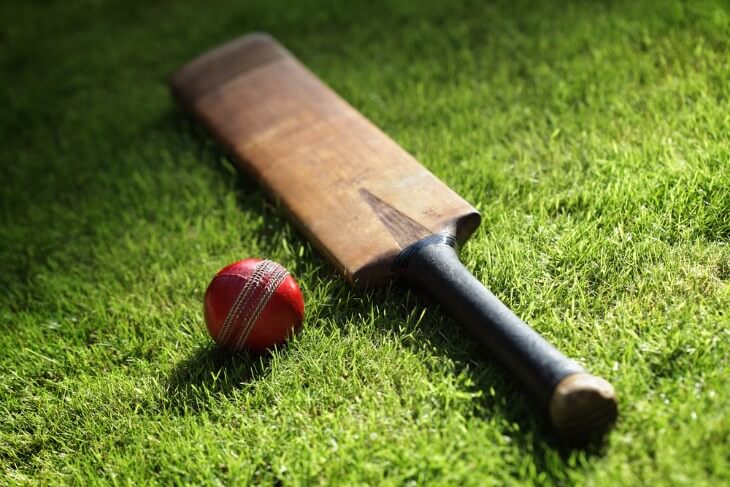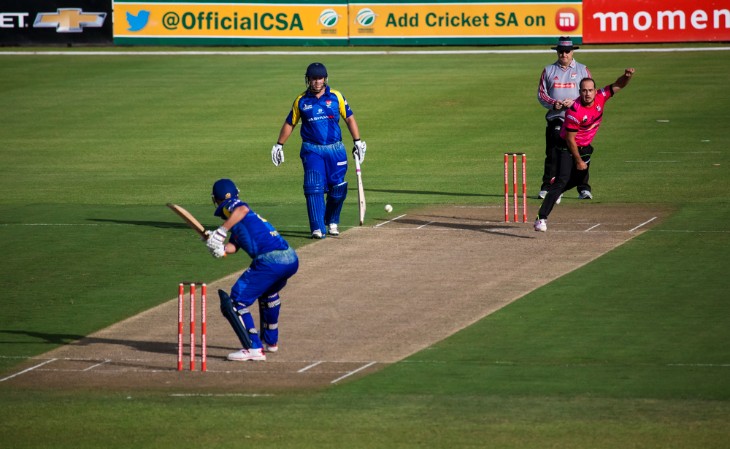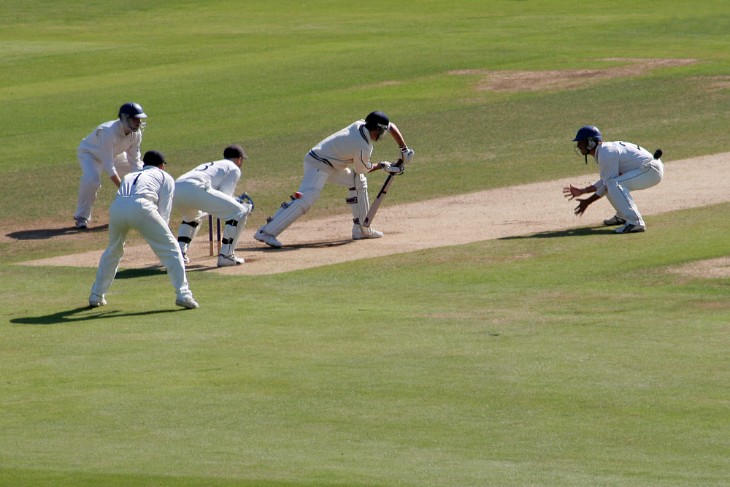- Early Pioneers and Influential Figures
- The Evolution of County Cricket Rules
- County Cricket's Role in English Society
- The Golden Era of County Cricket
- Iconic County Cricket Grounds
- Notable County Cricket Rivalries
- The Impact of County Cricket on International Cricket
- Challenges and Controversies in County Cricket
- Revitalizing County Cricket for the Modern Age
- County Cricket's Enduring Fan Base
- Conclusion: County Cricket's Timeless Legacy
In the realm of English sports, county cricket stands as a venerable institution. Its roots delve deep into the annals of history, and its legacy continues to influence the contemporary cricketing landscape. In this comprehensive exploration, we delve into the origins, evolution, and present-day significance of county cricket in the United Kingdom.
Early Pioneers and Influential Figures
While the formation of county cricket clubs was a collective effort, several individuals played pivotal roles in shaping the sport. Notably, Hambledon Cricket Club, founded in the 18th century, is often regarded as the birthplace of cricket as we know it. Prominent figures like Thomas Lord, who established Lord's Cricket Ground in London in 1787, contributed significantly to the game's infrastructure and development.
One of the most influential figures in the early days of county cricket was William Clarke. He not only organized the aforementioned All-England vs. Nottinghamshire match but also spearheaded the professionalization of cricket. Clarke's efforts paved the way for the transition from amateur to professional cricket, making it a viable career option for talented players.
The Evolution of County Cricket Rules
The rules governing county cricket have evolved significantly over the years. In its infancy, the game was played with a rudimentary set of guidelines, and local variations were common. As cricket gained popularity, the need for standardized rules became apparent. In 1787, the Marylebone Cricket Club (MCC) was formed, and it took on the task of codifying the laws of cricket.
One of the most significant early contributions to cricket's rulebook was made by Thomas Lord, the founder of Lord's Cricket Ground. Lord's became the unofficial home of cricket, and it was here that many crucial discussions on the rules of the game took place. Over time, the MCC's Laws of Cricket became widely accepted, and they continue to serve as the basis for the rules of the sport worldwide.
County cricket adopted these standardized rules, ensuring consistency in how the game was played across different regions. The rules addressed essential aspects of the game, including the size and weight of the ball, the dimensions of the pitch, and the regulations governing batsmen, bowlers, and fielders.
With the passage of time, the Laws of Cricket have undergone several revisions to accommodate changes in equipment, playing conditions, and the spirit of the game. These amendments have contributed to the continued growth and relevance of county cricket.
County Cricket's Role in English Society
County cricket has not merely been a sport; it has played a significant role in shaping English society. In the 19th and early 20th centuries, county cricket matches were pivotal social events. They attracted a wide cross-section of society, from factory workers to the upper classes, who would gather at county grounds to watch matches and socialize.
The sport also had a unifying effect on communities. The success of the local county team often instilled a sense of pride and identity among residents. Rivalry between counties added an extra layer of excitement to the matches and fostered a strong sense of loyalty among supporters.
Furthermore, county cricket provided a platform for players from diverse backgrounds to showcase their talents. It was one of the few sports where amateurs and professionals could compete side by side, and players of all social classes could earn recognition based on their skills and performance.
The Golden Era of County Cricket
The golden era of county cricket, spanning the late 19th century and the first half of the 20th century, marked a period of significant growth and achievement for the sport. During this time, county cricket teams produced some of the most iconic players in the history of the game.
The competitive spirit was intense, and legendary rivalries, such as the one between Yorkshire and Lancashire, captured the imagination of fans. Players like Sir Jack Hobbs, Sir WG Grace, and Herbert Sutcliffe became household names and set records that stood the test of time.
The introduction of the County Championship in 1890 added a new dimension to the competition. This first-class tournament elevated the status of county cricket, and it remains one of the most prestigious domestic competitions in the cricketing world.

Iconic County Cricket Grounds
County cricket has been closely associated with iconic cricket grounds scattered across the English countryside. These venues have witnessed historic matches and memorable moments in the sport's history.
Lord's Cricket Ground, often referred to as the "Home of Cricket," is the most renowned of them all. It has hosted countless Test matches and important county fixtures, earning its place as a hallowed cricketing venue.
Other famous grounds include The Oval in London, Old Trafford in Manchester, and Headingley in Leeds. Each of these venues has its own unique character and history, contributing to the rich tapestry of county cricket.
Over the years, these grounds have been renovated and modernized to meet the demands of the modern game while preserving their historic charm. They continue to serve as the battlegrounds where county cricket's future stars hone their skills and where fans gather to witness the sport's enduring traditions.
Notable County Cricket Rivalries
County cricket has a rich history of fierce rivalries that have captivated fans and players alike. These rivalries often transcend the boundaries of sport and become deeply ingrained in local culture and identity.
One of the most storied rivalries in county cricket is the battle between Yorkshire and Lancashire. Dating back to the 19th century, matches between these two counties are eagerly anticipated and fiercely contested. The Roses Match, as it is known, is a marquee fixture in the county cricket calendar and has produced some of the most memorable moments in the sport's history.
Similarly, the Northamptonshire vs. Leicestershire rivalry, known as the "Battle of the Bottom," may not have the glamour of the Yorkshire-Lancashire clash, but it has its own unique significance. These contests often determine which team finishes at the bottom of the County Championship, and the fierce competition adds an element of drama to the lower rungs of county cricket.
Other notable rivalries include Sussex vs. Kent, Surrey vs. Middlesex, and Warwickshire vs. Worcestershire, among others. These clashes generate passionate support from fans and create an electric atmosphere at the county grounds.
The Impact of County Cricket on International Cricket
County cricket has played a pivotal role in shaping international cricket. Many of the world's greatest cricketers, including luminaries like Sir Vivian Richards, Sir Garfield Sobers, and Sir Richard Hadlee, honed their skills in the English county circuit before achieving international stardom.
The system of having overseas players represent county teams has further enriched the sport. It has allowed emerging talents from around the globe to gain exposure to English conditions and learn from experienced campaigners. This cross-pollination of talent has contributed to the globalisation of cricket.
Moreover, county cricket has often served as a testing ground for international rule changes and innovations. New playing conditions and equipment have been trialled in county matches before being adopted in international cricket.
The impact of county cricket on the international stage extends beyond player development. The cricketing infrastructure, the high standards of organization, and the emphasis on the spirit of the game have all had a lasting influence on the global cricketing community.

Challenges and Controversies in County Cricket
While county cricket has a rich history and a prominent place in the world of sports, it has not been without its challenges and controversies. Like any institution, it has faced various issues over the years.
One of the persistent challenges in county cricket has been financial stability. Many county clubs have struggled with funding and faced the risk of bankruptcy. The high costs associated with maintaining cricket grounds, player salaries, and competition expenses have strained the resources of some clubs.
Another challenge has been the dwindling interest in the longer formats of the game. With the rise of Twenty20 (T20) cricket and the advent of franchise leagues like the Indian Premier League (IPL), traditional county cricket has faced competition for viewership and talent. Some argue that the lure of T20 cricket has led to a decline in the quality of the longer formats, which were once the bedrock of county cricket.
Controversies have also arisen, including issues related to player eligibility and transfer regulations. Questions surrounding player recruitment, residency rules, and international commitments have occasionally sparked debates within the cricketing community.
Moreover, the impact of the COVID-19 pandemic posed unprecedented challenges for county cricket. The suspension of matches, financial strain, and logistical issues brought about by the pandemic disrupted the regular season schedule and raised questions about the sport's sustainability in a changing world.
Despite these challenges and controversies, county cricket has demonstrated resilience and adaptability. The sport has continued to evolve, addressing issues as they arise and finding ways to stay relevant in a dynamic sporting landscape.
Revitalizing County Cricket for the Modern Age
Recognizing the need for adaptation, efforts have been made to revitalize county cricket for the modern age. Various initiatives have been introduced to attract new fans, boost revenue streams, and maintain the sport's relevance.
One such initiative has been the introduction of city-based franchises in the T20 Blast competition. This move aims to tap into urban markets and engage a younger, more diverse audience. By aligning teams with major cities, the hope is to create a stronger connection between cricket and urban communities.
Additionally, efforts to promote women's cricket within the county system have gained momentum. The establishment of women's county championships and the inclusion of female players in county squads have helped bridge the gender gap in cricket and encourage female participation.
Innovations like pink-ball cricket and day-night matches have been introduced to make the longer formats more appealing to a wider audience. These changes accommodate the working schedules of fans and offer a different cricketing experience.
County Cricket's Enduring Fan Base
County cricket has maintained a loyal and dedicated fan base throughout its long history. These fans play a vital role in the sport's continued relevance and success.
One of the strengths of county cricket is its close connection to local communities. Supporters often have a strong affinity with their county teams, stemming from regional pride and a sense of belonging. This local allegiance is a key factor in the enduring popularity of the sport.
Many county cricket clubs have made efforts to engage with their fans and enhance the matchday experience. This includes initiatives such as family-friendly events, interactive fan zones, and partnerships with local businesses. Such efforts aim to attract new generations of fans and ensure that county cricket remains a central part of the community.
Furthermore, the growth of digital media has opened up new avenues for fan engagement. Social media platforms, live streaming of matches, and online forums have provided fans with more ways to connect with their favourite teams and players. This digital presence has expanded the reach of county cricket beyond traditional boundaries.
In addition to local support, county cricket also benefits from the passionate following of expatriate communities. For many, following their county team is a way to stay connected with their roots and maintain a link to their homeland.
Overall, the enduring fan base of county cricket is a testament to the sport's ability to resonate with people on a personal and local level. It is a crucial component of county cricket's modern-day relevance.
Conclusion: County Cricket's Timeless Legacy
In conclusion, county cricket has a storied history that spans centuries, yet it remains a relevant and dynamic part of the sporting landscape. From its humble beginnings in the 18th century to its role in shaping international cricket, county cricket has evolved and adapted to meet the changing demands of the game.
While challenges and controversies have arisen, the sport's enduring fan base and proactive measures to modernize have ensured its continued relevance. Initiatives to engage new audiences, promote gender diversity, and explore innovative formats have breathed new life into county cricket.
The sport's historic rivalries, iconic venues, and contributions to cricket's global development continue to make it a cherished part of British sporting heritage. County cricket's timeless legacy lies in its ability to bridge the past and present, connecting generations of fans and players alike.
For more information:


